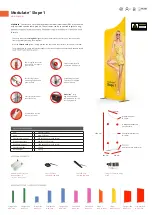
26
NOWPAK LINER-BASED CANISTER SYSTEM
User Manual | Entegris, Inc.
Connecting the Dispense Connector to a Canister
To use a filled canister, the end user installs one of the
three dispense connector types (ND-CD, ND-LD, or
MaxMT) onto the canister.
NOTE: The end user must ensure that the dispense connector
threads match the threads on the connector base or canister
neck. See Appendix B: Canister Compatibility Matrix, page 32,
for information on which dispense connectors can be used
with each canister.
1. Verify that the chemical inside the canister exactly
matches the chemical required at the dispense
connector to be used.
2. Verify that the three-way pressure control valve
is closed.
3. Verify that the liquid dispense control valve is closed.
4. Select a liner-based canister filled with the
desired chemical.
5. Unscrew the closure cap (or one-piece closure), Figure
43. Keep the cap (or closure) for canister return.
Closure cap
Closure base
(stays installed
on canister)
Figure 43. Removing the closure cap (two-piece 10- to 40-liter
closure shown).
6. Hold the dispense connector by the body and position
the connector directly over the canister opening.
7. Insert the probe of the dispense connector into the
canister. Press downward with a sharp movement
to snap the probe through the breakseal.
IMPORTANT: Failure to center the probe and provide a
sharp force to rupture the breakseal may result in
interference between the probe/breakseal and coupler.
This interference can result in dispense difficulties.
8. Hold the top of the dispense connector and apply
slight downward pressure. Rotate the lower
threaded portion of the connector clockwise to
engage and seal the connector to the interior
diptube, Figure 44.
Do not overtighten.
If the closure or canister
threads are damaged or cross-threaded, liquid
dispense may be affected.
Figure 44. Installing the dispense connector (ND-CD shown).
Dispensing Chemical from the Canister
Once the dispense connector has been attached to a
canister, the end user operates the canister system to
dispense chemical, Figure 42.
1. Verify the gas pressure at the regulator is set to the
desired operating pressure.
WARNING: The maximum operating pressure
is 101 kPa (14.7 psig) within the United States.
Outside of the United States follow local
regulations, which may require lower dispense
pressure be used. The maximum internal canister
pressure is 196 kPa (28.4 psig). Do not allow the
pressure inside any canister to exceed this rating.
2. Open the three-way pressure control valve to
pressurize the space between the canister and
liner. The canister is pressurized to the gas
regulator set point.
NOTE: Steps 3, 4, and 5 are different for the MaxMT
dispense connector. The MaxMT system is equipped
with a control box used to start and stop dispense from
the canisters. See the appropriate user guide or data sheet
for detailed instructions.
3. Verify the outlet of the liquid out line is attached to
a reservoir or tool.
4. Displace the air in the liquid dispense line with
chemical by opening the control valve to allow
chemical to flow.
5. After all air has been removed from the dispense line
the system is ready for normal chemical dispense.
Pressure may be applied either intermittently or
continuously until the canister is empty.









































